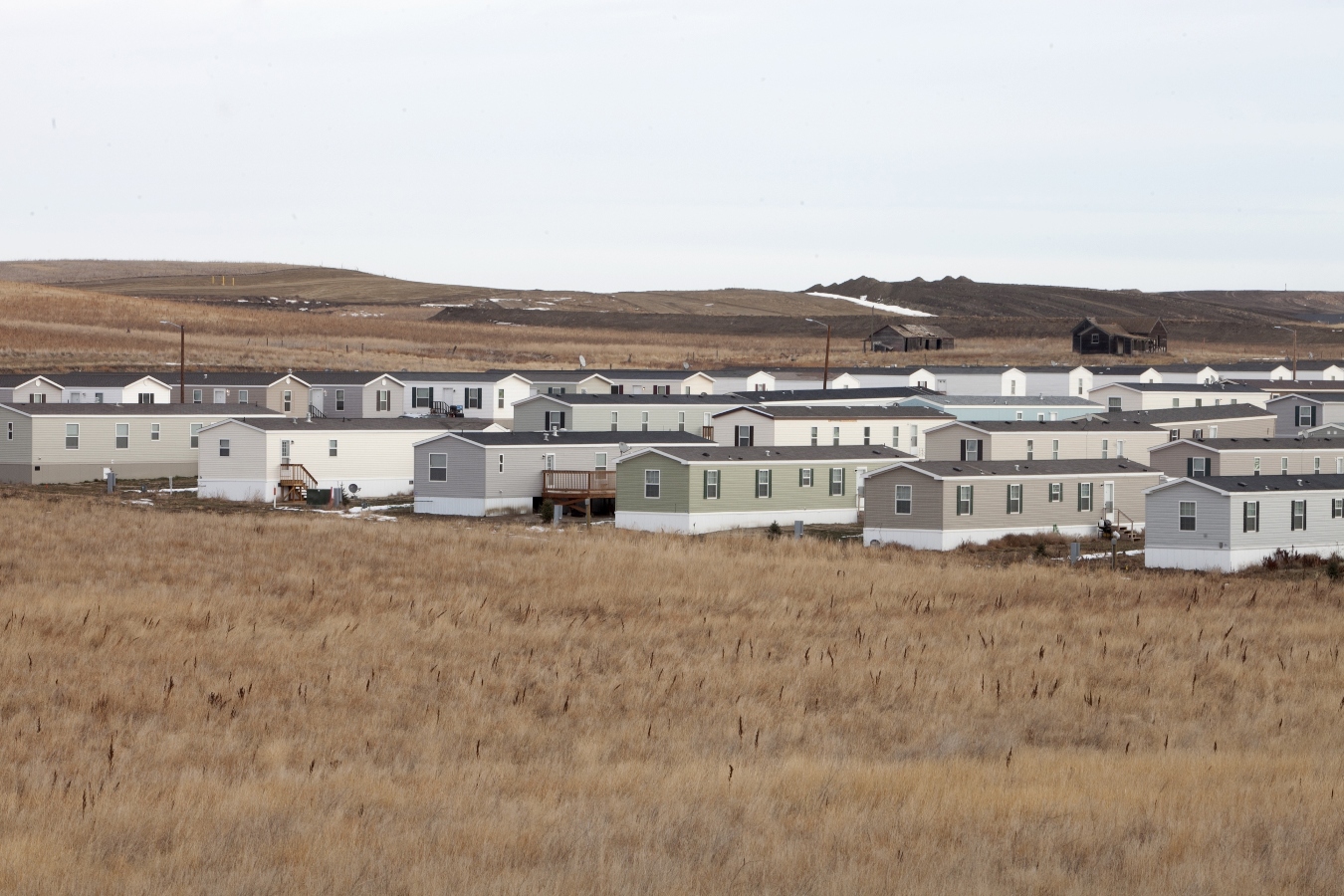This story was supported by the Economic Hardship Reporting Project.
The sign that welcomes people into Williston, North Dakota, has an inscription at the bottom: “Boomtown, USA.” It’s one way of characterizing the now infamous oil boom that doubled the city’s population between 2010 and 2020, with an influx of workers eager to get to the oilfields. All those newcomers led to another boom: an increase in evictions.
New research from Princeton University sheds light on the relationship between fracking and evictions, finding that in Williams County, the surrounding area of Williston, eviction filings rose from 0.002 percent in 2010 to over 7 percent by 2019. In the same time period, fracked oil in the area grew from 300,000 barrels of oil a month to 7½ million barrels a month.
Williston is not alone. Other research backs up the connection between fracking and evictions, since the industry often draws an influx of new, temporary residents to places like Midland, Texas, or Lycoming County, Pennsylvania. This is because fracking often leads to a plethora of high-paying jobs. In the meantime, long-time residents aren’t always able to access the wealth that these areas produce and are left to bear out the consequences long after the boom is over.
“Renters are almost invariably going to lose out in this equation,” said Carl Gershenson, lead author and director of Eviction Lab at Princeton University.
Existing residents can often be displaced because landlords can charge short-term renters exorbitant rates instead of the relatively affordable prices that long-term renters pay for the same property, according to Gershenson.
“A savvy landlord realizes that a lot of these people are coming for the season,” said Gershenson. “So it’s very common to, say, switch over a place that had been on an annual lease to monthly leases. And now you’re renting out rooms instead of a whole house. In some cases, you can fit 10 or 12 people, you know, into a house that was renting out to one family.”
He also notes that not only do evictions displace residents, but can be a destabilizing force for the people that have experienced them.
“Evictions are not just the consequence of poverty, but really are one of the leading causes of poverty,” said Gershenson.
People who have experienced evictions often also experience mental and physical health issues more than their peers who have never been evicted.
Another hurdle to overcome is that smaller municipalities aren’t often equipped to handle the influx, or the developers that follow rapid population increases. So things like long-term planning fall by the wayside as cities and towns try to cope with the immediate increased needs for municipal services.
“It’s an investment in terms of not only hard infrastructure, like pipes, and electrical and roads, but also human infrastructure, things like law enforcement, things like emergency services, things like social services,” said William Caraher, associate professor of history and American Indian studies at the University of North Dakota.
Caraher also noted that initially, the large presence of man camps, or temporary housing for oilfield workers, posed a problem for community members who did not want the negative stigma associated with the drug use and other issues that arrived with the camps. In response, many cities and towns in this area allowed more development to occur, so that workers could live in a form of permanent housing. But now those places are left with hastily built and overpriced housing.
There are ways to combat displacement, though, and one solution that Caraher points to are increased protections for tenants, which could help keep eviction rates low.
Caraher noted that despite the fact that people in the community did attempt to secure more housing and tenants rights, the pace of the boom was ultimately too much to accommodate lower-income, longer-term residents.
Another option that Gershenson points to is something called a community-benefits agreement, wherein residents can work with companies to determine how any economic development can help long-time residents alongside any new employees drawn to the area for work.
“I think it’s fair that the community captures some of those profits to invest into affordable housing,” he said.
There needs to be better options, said Caraher, to accommodate both workers and communities in boomtowns.
Housing in the U.S. falls between two extremes, either short-term hotels or forever homes, he said. “This kind of gray area in between isn’t ever well established as to how it should operate,”



